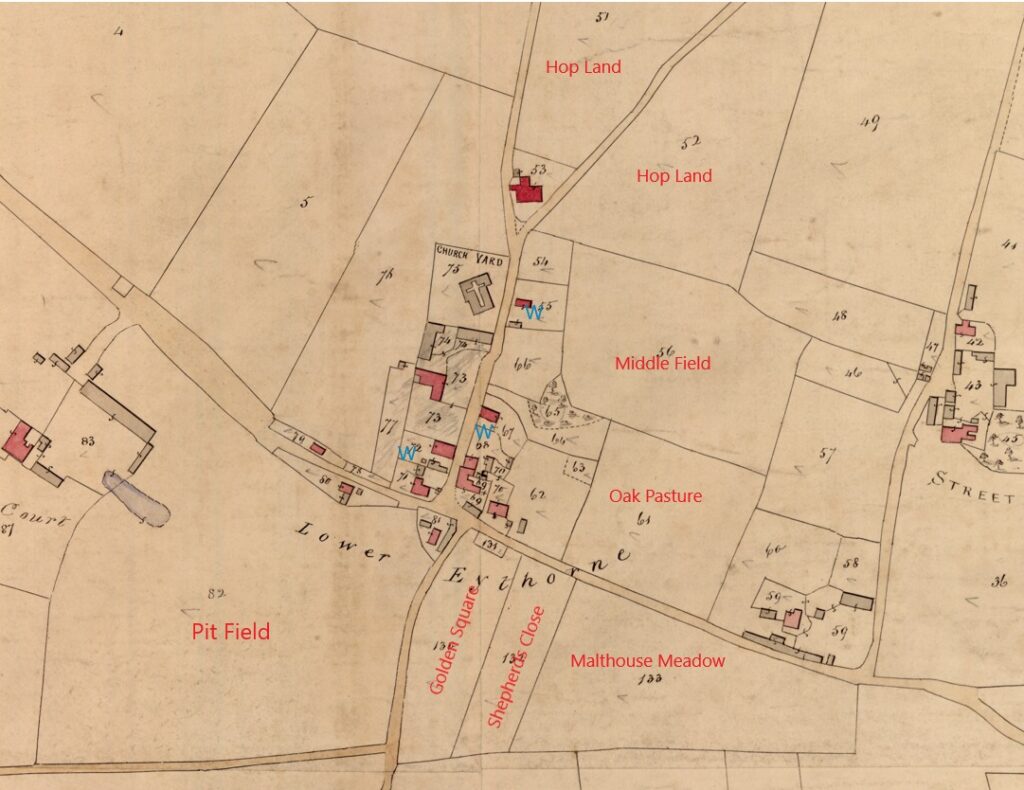Field Names -Malthouse Meadow
A malt house is a building where cereal grain is converted to malt by soaking in water, the malt then being used to brew beer. Many villages had a malt house in the 18th century to supply the needs of local publicans, estates and home brewers. During the 19thcentury these disappeared upon the growth of the larger breweries.
The Tithe Award Schedule, signed 7thApril 1845, for Eythorne shows a field called Malthouse Meadow, nearly opposite the White Horse Inn on Wigmore Lane. It is marked on the attached plan and it seems very possible that this was the location of the village malt house as it’s close to the White Horse Inn, close to wells for water (marked in blue on the plan) and also close to hop fields (two fields are described as Hop Land in the schedule).
The White Horse was a very old inn. The earliest reference to it is in the Wingham Divisional Ale Licence list of 1740 which shows the White Horse, Eythorne to be re-licensed for the sum of 8 shillings, so it predates 1740. The White Horse is mentioned in the Tithe Award Schedule as are pubs in the schedules for other parishes. It is interesting to note therefore, that the Crown Inn is not mentioned by name in the Eythorne schedule (it merely refers to house, garden and buildings) suggesting it was not a public house when the schedule was compiled (1830s and 1840s).
Next to Malthouse Meadow is a field called Shepherds Close. I think this field may be where drovers, moving sheep from one location to another (perhaps to market) kept the sheep overnight whilst staying at the White Horse Inn. Also on the plan is a large field called Pit Field which would have been a chalk pit originally and is still lower than the surrounding land. Finally there is a field called by the curious name Golden Square. There is no straightforward (local) reason for the name but I think the owner (Mark Parker in 1845) may have called it that because of a square in Soho, London known by that name that was used for horse grazing originally and that became famous in the 1700s as a place foreign diplomats resided. So possibly this was a field used for horse grazing.
Vince Croud


